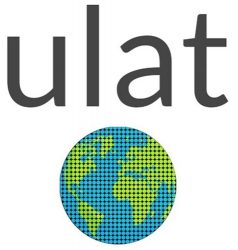PLEASE NOTE: These lessons will NOT function properly if you use Safari as your browser. It is recommended that you use Google Chrome.
Table of Contents
Shortcuts to ULAT Units
FIRST YEAR (UNITS 1-2)
UNIT 1
1.1 The ULAT’s symbolic directions
1.3 Singular personal pronouns
1.4 Present simple conjugation
1.5 Negation and question formation (first type)
1.6 Negation and question formation (second type)
1.7 Common conversational expressions
1.8 Vocabulary for the first verb
1.9 Present simple conjugation
1.10 Vocabulary for Verbs 2 – 5
1.12 Vocabulary for Verbs 6 – 11
1.16 Negation and question formation
1.17 Vocabulary, articles, review of “gustar” and clarifiers
1.20 Vocabulary for Verbs 12 – 23
1.21 Interview no. 1 and expressing “there is/there are”
1.22 Interview summary and self-presentation no. 2
1.23 Vocabulary and definite and indefinite articles
1.25 Vocabulary and articles with verbs 24-32
1.26 Question formation, negation and expressing “there is/there are”
1.27 Verbs 1 – 32 in context – Part I
1.29 Expressing the idea “to be”
1.31 Vocabulary for Verbs 33 – 44
1.33 Vocabulary related to the school environment
1.34 School vocabulary and the difference between “saber” and “conocer”
1.35 Verbs 1 – 44 in context – Part 2
1.37 Verbs 53 – 60 and supplementary vocabulary
1.38 Vocabulary and articles with Verbs 45 – 60
1.39 Language Pals activity and test on Verbs 1 – 60
1.40 Verbs 1 – 60 in context – Part 3
1.43 Present simple conjugation with Verbs 1 – 11
1.44 Present simple conjugation with Verbs 12 – 23
1.45 Present simple conjugation with Verbs 24 – 34
1.46 Present simple conjugation with Verbs 35 – 45
1.47 Present simple conjugation with Verbs 46 – 53
1.48 Present simple conjugation with Verbs 54 – 60
1.49 Sentence structure review
1.50 Concluding Language Pals activity for Unit 1
Shortcuts to ULAT Units
UNIT 2
2.1 Presentation with interrogatives
2.2 Drills with interrogatives
2.3 First reading selection, Phonics 1 and the alphabet
2.4 First reading selection, Phonics 2 and the alphabet
2.5 First reading selection, Phonics 3 and the alphabet
2.6 First reading selection, Phonics 4 and the alphabet
2.7 First reading selection, Phonics 5 and the alphabet
2.8 First reading selection, Phonics 6 and the alphabet
2.9 Oral summary of the first reading selection
2.10 Oral response to written questions and the alphabet
2.12 Conjugation of daily routine verbs
2.13 Expressing need and purpose and the specificity of articles and adjectives of quantity
2.14 Drills regarding the expression of need and purpose and the specificity of articles and adjectives of quantity
2.15 Expressing time and one’s daily routine and the specificity of articles and adjectives of quantity
2.16 Drilling the expression of one’s daily routine
2.17 Weekly and monthly activities vocabulary
2.18 Language Pals: Discussing your mutual weekly routines
2.19 The present progressive tense
2.20 Drilling the present progressive tense
2.21 Alphabet review and numbers to 9,999
2.22 Presenting modals and the near future
2.23 Drilling modals and the near future
2.24 Professions, modals and the verb “to be”
2.25 Phonics review and practice reading aloud
2.27 Using interrogatives in discussing the second reading selection
2.28 Oral summary of the second reading selection
2.29 Interpersonal relationships
2.30 Problem-solving situations
2.31 Interpersonal relationships vocabulary review
2.32 Problem-solving vocabulary review
Supplementary reading for Units 1 and 2
Supplementary reading: “The Old Man, the Boy and the Bridge” – Part 1
Supplementary reading: “The Old Man, the Boy and the Bridge” – Part 2
Supplementary reading: “The Old Man, the Boy and the Bridge” – Part 3
Supplementary reading: “The Old Man, the Boy and the Bridge” – Part 4
Supplementary reading: “The Old Man, the Boy and the Bridge” – Part 5
Supplementary reading: “The Old Man, the Boy and the Bridge” – Part 6
Supplementary reading: “The Old Man, the Boy and the Bridge” – Part 7
Supplementary reading: “The Old Man, the Boy and the Bridge” – Part 8
Supplementary reading: “The Old Man, the Boy and the Bridge” – Part 9
Shortcuts to ULAT Units
SECOND YEAR (UNITS 3-6)
UNIT 3
3.1 Adjectives of physical description
3.2 Adjectives of physical description with the verb “to be”
3.4 Drilling adjectives of physical description and emotion
3.5 Sentences with multiple adjectives
3.9 Health and physical condition
3.10 The vocabulary of family relationships
3.11 Phonics review and practice reading aloud
3.13 Written questions on the third reading selection
3.14 Summary activity describing self and others
3.15 Presentation of possessive adjectives
3.16 Drills with possessive adjectives
3.19 Demonstrative and possessive pronouns
Shortcuts to ULAT Units
UNIT 4
4.2 Exterior of the home and synony of Verbs nos. 1 – 23
4.3 Exterior of the home and synonyms of Verbs nos. 1 – 23
4.4 Interior of the home and synonyms of Verbs nos. 1 – 23
4.7 Frequency of household chores
4.9 Alternative means of negation
4.11 Synonyms of Verbs nos. 24 – 60
4.12 Food preparation (cookies)
4.14 Food preparation (pancakes)
4.15 Expressing the concept of “some” (partitive construction)
4.16 Food preparation (sausages)
4.18 Food vocabulary (fruit and vegetables)
4.19 Food vocabulary (meat, seafood and dairy products) and restaurant expressions
4.20 Food vocabulary (beverages and condiments) with emphasizers and clarifiers
4.21 Cooking and food vocabulary review and the verb “to use”
4.22 Cooking and tablesetting vocabulary review
Shortcuts to ULAT Units
UNIT 5
How to Use the Written Exercises in Unit 5
5.1 Phonics review and the use of accent marks
5.3 Verbs 1 – 60 in their infinitive form
5.4 Present simple verb conjugation with Verbs 1 – 11
5.5 Present simple verb conjugation with Verbs 12 – 23
5.6 Present simple verb conjugation with Verbs 24 – 32
5.7 Present simple verb conjugation with Verbs 33 – 44
5.8 Present simple verb conjugation with Verbs 45 – 60
5.9 Present simple verb conjugation with Daily Routine Verbs
5.10 Question formation and negation
5.11 Specificity of articles and adjectives of quantity
5.13 Language Pal letter no. 1 (self-presentation)
5.16 Present progressive tense
5.19 Expressing need and purpose
5.20 Oral summary of the Richardsons 1 (based on written text)
5.21 Expressing one’s daily routine
5.23 The Richardson Family – Part 2
5.25 “What makes a good father and a good mother?”
5.26 Interpersonal relationships and problem-solving vocabulary
5.27 Problem-solving with modals, the near future and “one another”
5.28 Language Pal letter no. 2 (daily routine)
5.29 Adjectives of physical and emotional description
5.30 Adjective agreement and the verb “to be”
5.31 Double-adjective sentences and emotional responses
5.35 Polite conversational expressions
5.36 Miscellaneous sentence structures
5.40 Demonstrative adjectives and pronouns
5.41 Language Pal letter no. 3 (describing a friend or family member)
5.42 Prepositions of spatial relationships
5.43 Sample sentences with prepositions
5.44 Describing the exterior of a house
5.45 Vocabulary of the interior of a house
5.46 Giving a tour of your home
5.47 Household chores and expressing frequency
5.50 Food preparation (cookies)
5.51 Food preparation (pancakes)
5.52 Food preparation (sausages)
Shortcuts to ULAT Units
UNIT 6
6.6 Giving and receiving directions
6.7 Giving and receiving directions
6.8 Stores, shops, institutions and the passive use of the reflexive pronoun “se”
6.9 Describing a town and familiar commands
6.10 The simple past to describe the author’s personal history
6.11 Time expressions to use with the simple past
6.12 Simple past with Verbs 1 – 11
6.13 Simple past with Verbs 12 – 22
6.14 Simple past with Verbs 23 – 33
6.15 Simple past with Verbs 34 – 44
6.16 Simple past with Verbs 45 – 52
6.17 Simple past with Verbs 53 – 60
6.18 Simple past with Daily Routine Verbs
6.19 Using time expressions and “for”, “since”, “during” and “ago” to express one’s personal history
6.20 Simple past regarding one’s daily routine
6.21 Irregular simple past forms
6.23 Indirect object pronouns 2
6.24 Direct object pronouns referring to people
6.25 Direct object pronouns referring to people and things
6.26 Direct and indirect object pronouns
6.28 Object pronouns with all verb tenses
6.29 Object pronouns in commands
6.30 Object pronouns with all verb tenses and negation
6.31 Verb tense and object pronoun review
Shortcuts to ULAT Units
THIRD YEAR (UNITS 7-10)
UNIT 7
7.1 The solar system, the Earth and comparatives and superlatives
7.2 Comparatives and superlatives
7.4 Countries, nationalities and languages
7.12 Describing the setting in which an action takes place
7.17 Imperfect tense to describe habitual past action
7.18 Imperfect vs.simple past tense
7.19 Imperfect tense to describe parallel or interrupted action
7.20 Imperfect tense to describe the setting
7.21 Overview of the imperfect tense
7.25 Language Pals: Favorite vacation spot
Shortcuts to ULAT Units
UNIT 8
8.1 Tools, their use and the passive voice
8.3 Miscellaneous physical activities
8.7 Additional progressive tenses
8.8 Distinguishing between the imperfect tense, the past progressive and the preterite progressive.
8.10 All verb form review (Part 1)
8.11 All verb form review (Part 2)
8.14 Present perfect subjunctive
8.16 “If” clauses and the conditional
8.17 “If” clauses and the conditional (part 2)
Shortcuts to ULAT Units
UNIT 9
How to Use the Written Exercises in Unit 9
9.1 Commands 19.5 Preterite for Verbs 1 – 11
9.6 Preterite for Verbs 12 – 22
9.7 Preterite for Verbs 23 – 33
9.8 Preterite for Verbs 34 – 44
9.9 Preterite for Verbs 45 – 60
9.10 Preterite for one’s daily routine
9.11 Preterite for one’s personal history
9.13 The use of object pronouns
9.14 Object pronouns and the imperative mood
9.15 Comparatives and superlatives
9.16 Present perfect tense vs. simple past tense
9.21 Using tools and the passive voice
9.22 Yardwork and physical activity
9.26 Distinguishing between the present progressive, imperfect and preterite progressive
9.29 Present perfect subjunctive
9.31 “If” clauses and the conditional mood
9.32 Review of verb tenses and moods
Shortcuts to ULAT Units
UNIT 10
10.1 “Mi Padre” (up to WWII) / Luke 1
10.2 Exercises on “Mi Padre” / Luke 2
10.3 Test on “Mi Padre” / Luke 3
10.4 “Mi Padre” (the war years) / Luke 410.5 Exercises on “Mi Padre” / Useful vocabulary for composition writing
10.6 Test on “Mi Padre” / Useful vocabulary for composition writing
10.7 “Mi Padre” (end of WWII) / Luke 510.8 Exercises on “Mi Padre” / Luke 6
10.9 Test on “Mi Padre” / Luke 7
10.10 Composition writing: connecting vocabulary / Luke 8
10.11 Composition writing: exercises with connecting vocabulary / Luke 9
10.12 “Mi Infancia” / Luke 1010.13 Exercises on “Mi Infancia” / Luke 11
10.14 Test on “Mi Infancia” / Luke 12
10.15 More useful vocabulary for composition writing
10.16 Test on vocabulary for composition writing
10.17 “Mi Adolescencia” / Luke 13
10.18 Exercises on “Mi Adolescencia” / Luke 14
10.19 Test on “Mi Adolescencia” / Luke 15
10.20 “Primera influencia: Melvin Correll y la fe en Cristo” / Luke 16
10.21 Exercises on “Primera influencia: Melvin Correll y la fe en Cristo” / Luke 17
10.22 Test on “Primera influencia: Melvin Correll y la fe en Cristo” / Luke 18
10.23 “Segunda influencia: Tom Villemure” / Luke 19
10.24 Exercises on “Segunda influencia: Tom Villemure” / Luke 20
10.25 Test on “Segunda influencia: Tom Villemure” / Luke 21
10.26 “Tercera influencia: Flex” / Luke 22
10.27 Exercises on “Tercera influencia: Flex” / Luke 23

